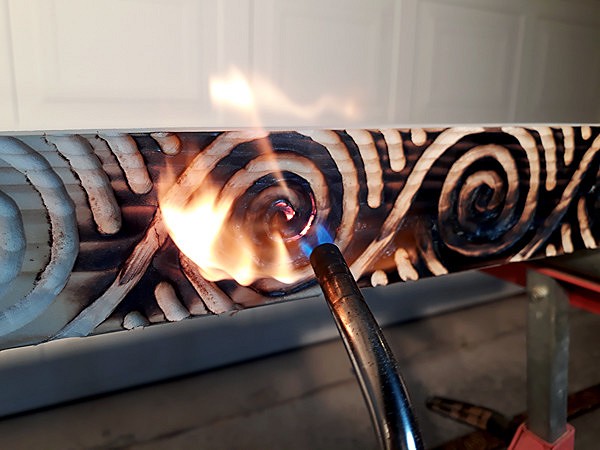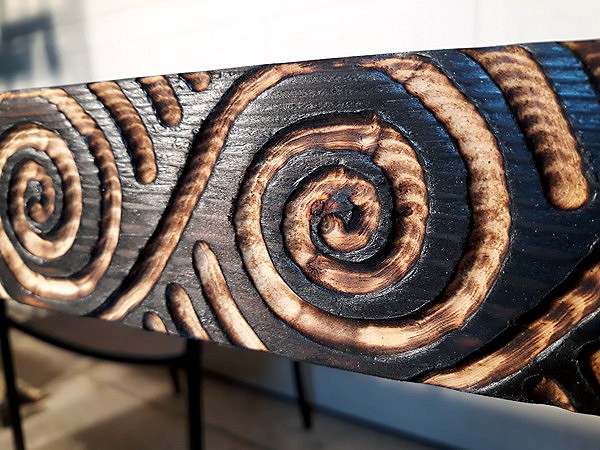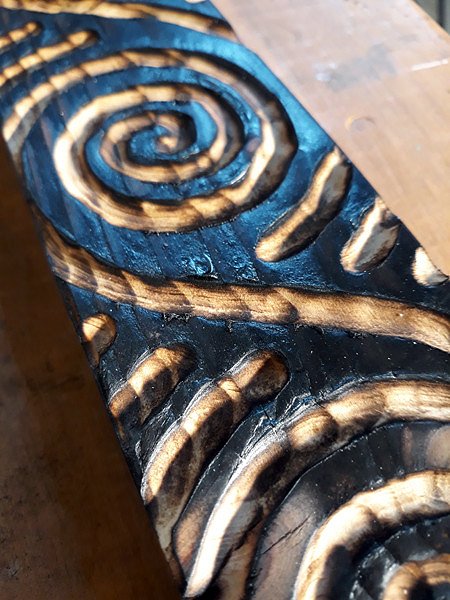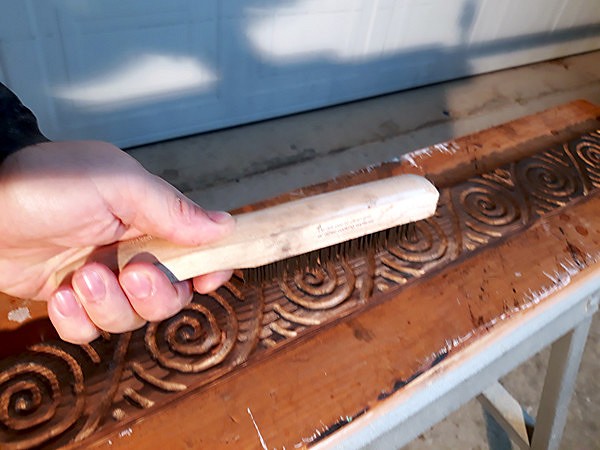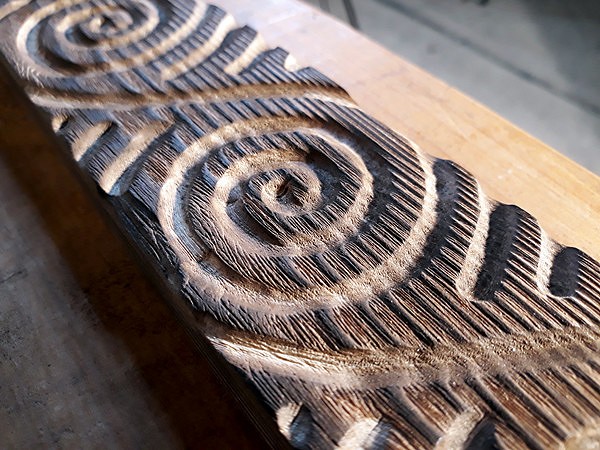Tiki Central / Home Tiki Bars / Lagoon of Mystery
Post #807278 by Prikli Pear on Tue, Jan 10, 2023 1:57 PM
|
PP

Prikli Pear
Posted
posted
on
Tue, Jan 10, 2023 1:57 PM
My work on the spiral trim continues to plod along. I know much of this has been posted elsewhere, but I wanted to recap the technique for any newcomers hoping to start on their own home tiki bar. Once I had all of the spirals routed out (or Dremeled out in this case) it was time to apply the flame treatment. I use a hand-held Berzomatic propane/butane torch. Nothing fancy, although I recommend those with built-in igniters. I set the flame on what might be considered medium-low and wave it back and forth over the wood until the top layer is evenly charred and the carved out sections are toasted enough to see browning in the wood. I also toast the sides of the boards, although this isn't strictly necessary.
This is how the trim pieces look when I'm finished torching them. I don't use a terribly light touch, but I don't turn it all into charcoal, either.
Some folks like it all blackened, others less so. And advantage of burning is that any fuzz, splintering or minor blemishes simply go away when kissed by fire. In the Japanese technique of shou sugi ban, a coat of preserving oil (tung, linseed, etc.) is applied at this stage. The combination of carbonized wood and oil makes the wood water resistant and resistant to insects, rot and decay. It's gained popularity in the U.S. in the past couple of decades for the aesthetic look it gives the wood. It's not specifically tiki, but it's not not tiki either. Just a data point if you want to look further into it.
Once all the torching is finished, it's time to hit the wood with a good wire brush scrubbing. Some have asked if using a power tool for this would work better. I've found brush attachments for something like a Dremel aren't durable enough to last for more than a few square inches of brushing, whereas heavier brushes--be they wire or nylon--used with a power drill are far too aggressive and strip away all the detail. But your mileage may vary.
The idea of the wire brush scrubbing is to remove the carbonized wood to leave dramatic texture behind, which simulates the long-term aging of wood. I've seen this referred to as "raising the grain" here on TC, but that shouldn't be confused with the woodworking term raising the grain, which involves wetting a piece of wood during the sanding process. Because of the unique growth properties of softwood trees, softwood (such as pine, cedar, cypress) work much better for this technique than hardwoods (ie oak, poplar, maple). I'm using the cheapest pine I can get here. Western red cedar works well and is weather resistant for outdoor spaces, but is unfortunately around triple the cost of an equivalent board of pine. So there's that.
|

